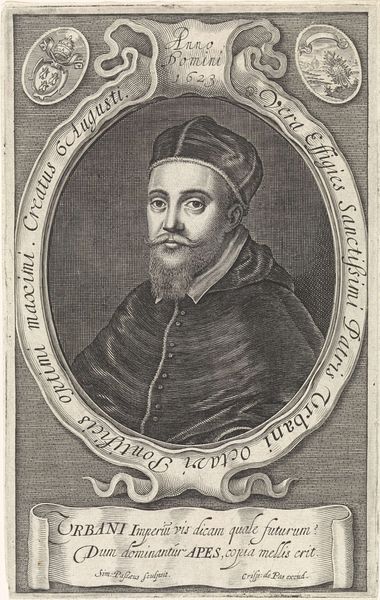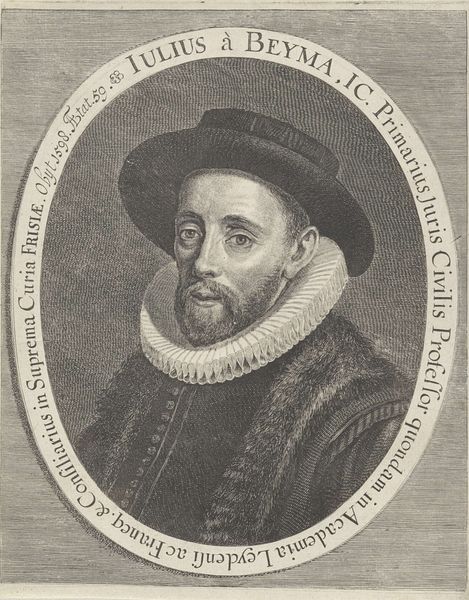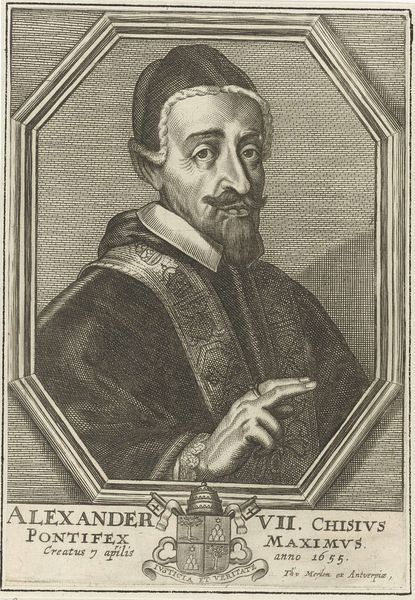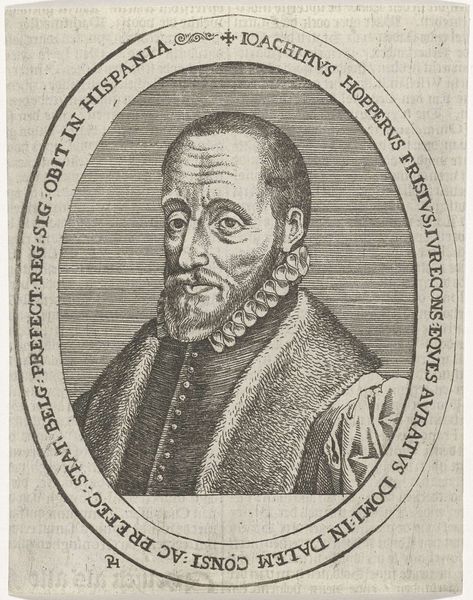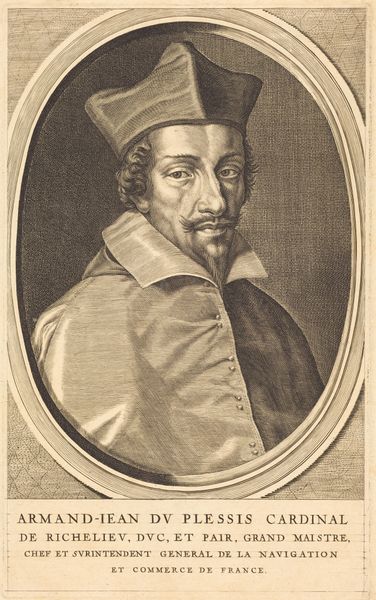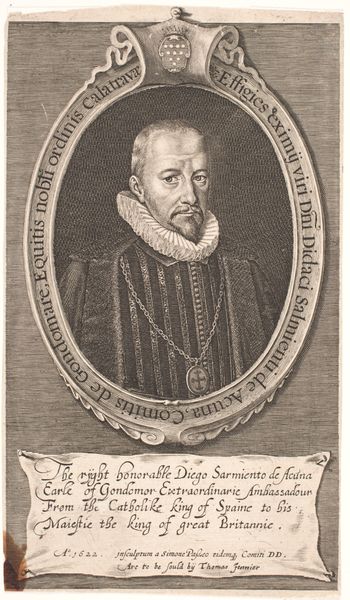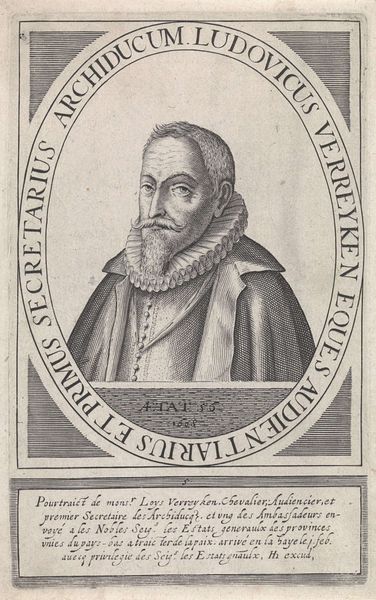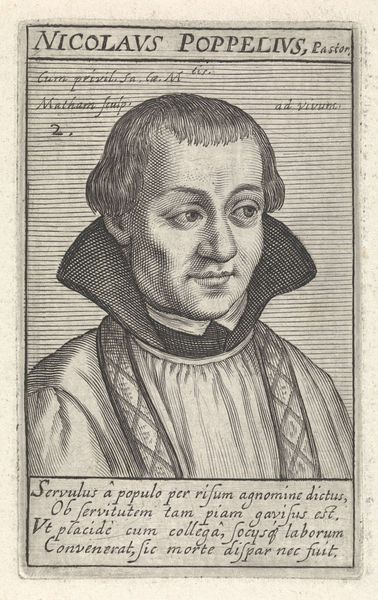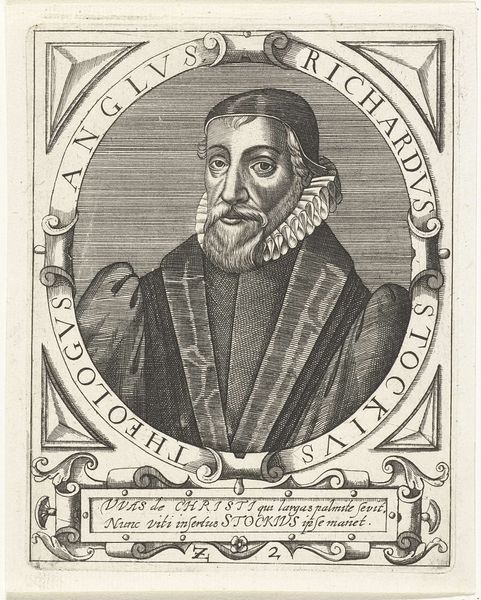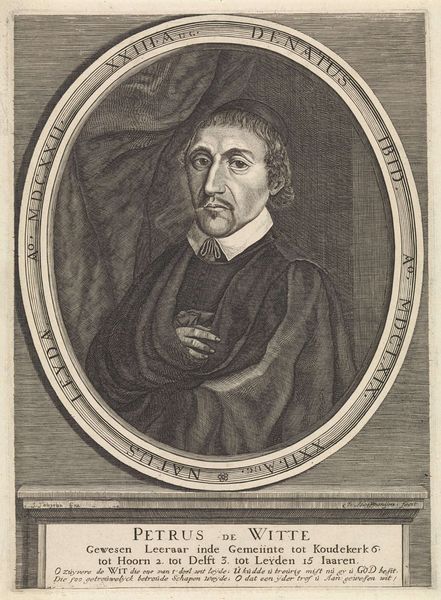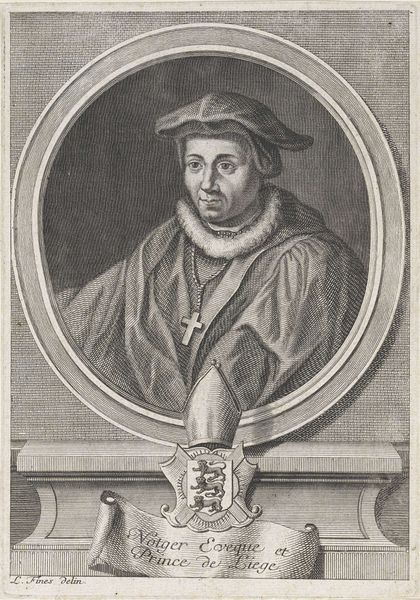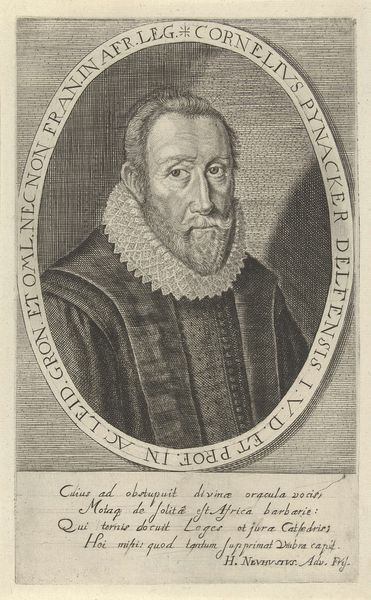
print, engraving
#
portrait
#
baroque
#
head
# print
#
old engraving style
#
personal sketchbook
#
portrait reference
#
sketchbook drawing
#
portrait drawing
#
sketchbook art
#
forehead
#
engraving
Copyright: Public domain
Editor: Here we have a print, an engraving of Lancelot Andrewes, probably made around the early 17th century by Wenceslaus Hollar. It’s quite formal, and the subject seems rather serious. What can you tell us about this work? Curator: This image is deeply embedded in the visual culture surrounding religious authority in the period. Consider the role of the Church of England during the reigns of James I and Charles I. Portraits like these functioned as both affirmations of power and tools of propaganda. How do you think the image was disseminated? Editor: Possibly through printed books or pamphlets, maybe hung in churches or homes of wealthy patrons? Curator: Precisely. These prints were relatively accessible, making them powerful tools. The very act of circulating Andrewes’ image reinforces his importance and the authority of the Church. It's also worth considering Hollar's own position as an artist working within specific political contexts. His choices, from the inclusion of particular symbols to the style of engraving itself, reflect these relationships. Have you considered the text below the portrait? Editor: I see "Vera Effigies Reverendi..." which suggests it's a "true likeness" of a revered person, in this case Lancelot Andrewes, Bishop of Winchester. Curator: Yes, so it suggests authenticity, even objectivity, but, of course, it is mediated by the artist. How does the format contribute to this objective of “true likeness?” Editor: I suppose, by framing the subject in an oval, it references classical portraiture, maybe suggesting timeless importance? Curator: Exactly! By situating Andrewes within established visual traditions, the print lends him additional authority and underscores the power of imagery in shaping perceptions of religious figures. I've never noticed before that his face expression also plays into this. Editor: So, it’s not just a portrait but also a carefully constructed statement about power and religious authority at a crucial point in English history. I’ll definitely look at these engravings differently now. Curator: And hopefully think critically about the power dynamics embedded in visual representations of authority, even today.
Comments
No comments
Be the first to comment and join the conversation on the ultimate creative platform.
